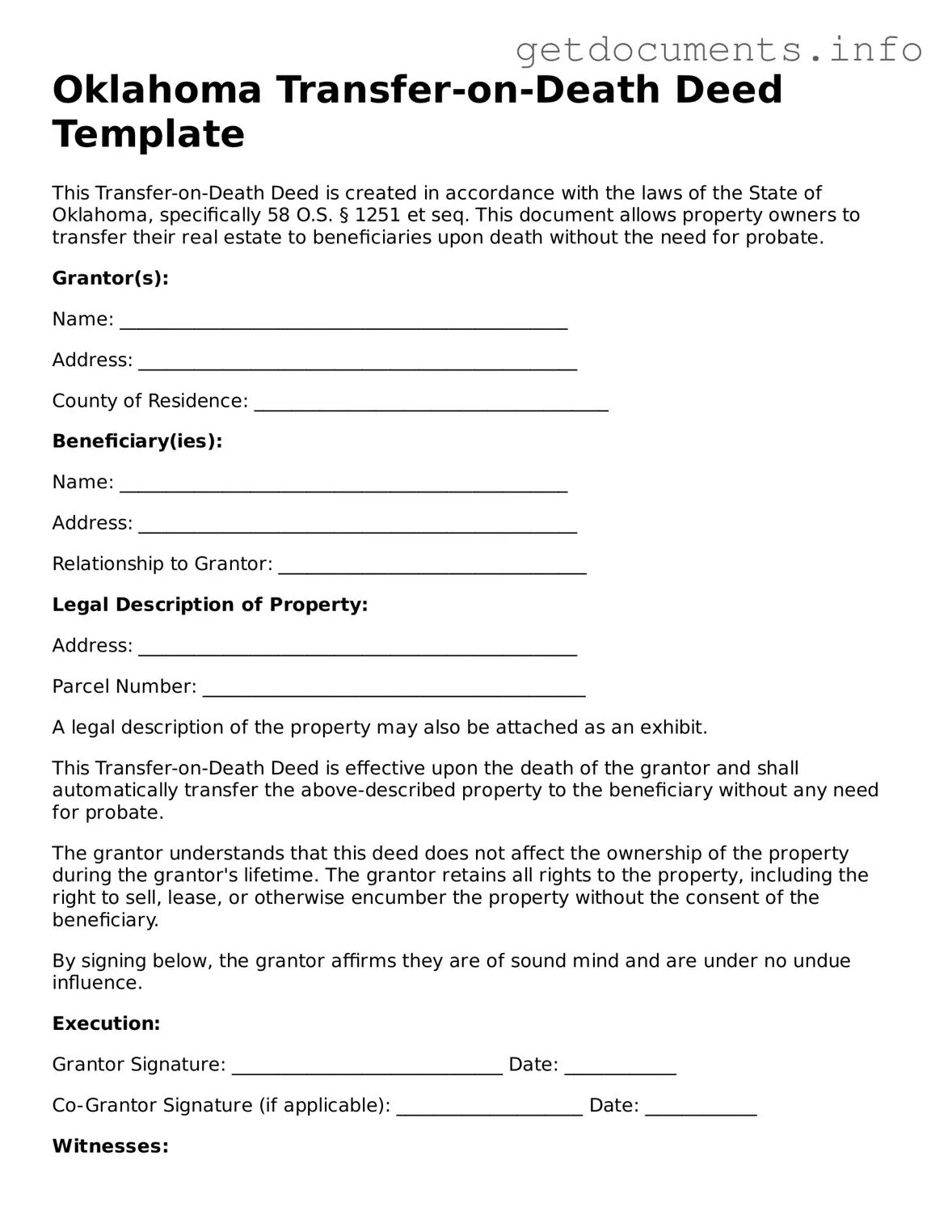Free Transfer-on-Death Deed Template for Oklahoma
The Oklahoma Transfer-on-Death Deed form is a legal document that allows property owners to designate beneficiaries who will receive their real estate upon the owner's death, bypassing the probate process. This form serves as a valuable estate planning tool, providing a straightforward method for transferring property while retaining ownership during the owner's lifetime. To begin the process of securing your property for your loved ones, consider filling out the form by clicking the button below.
Access Transfer-on-Death Deed Editor
